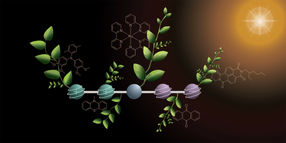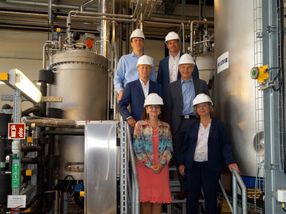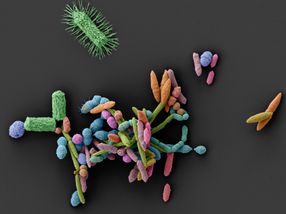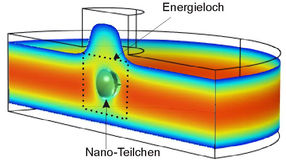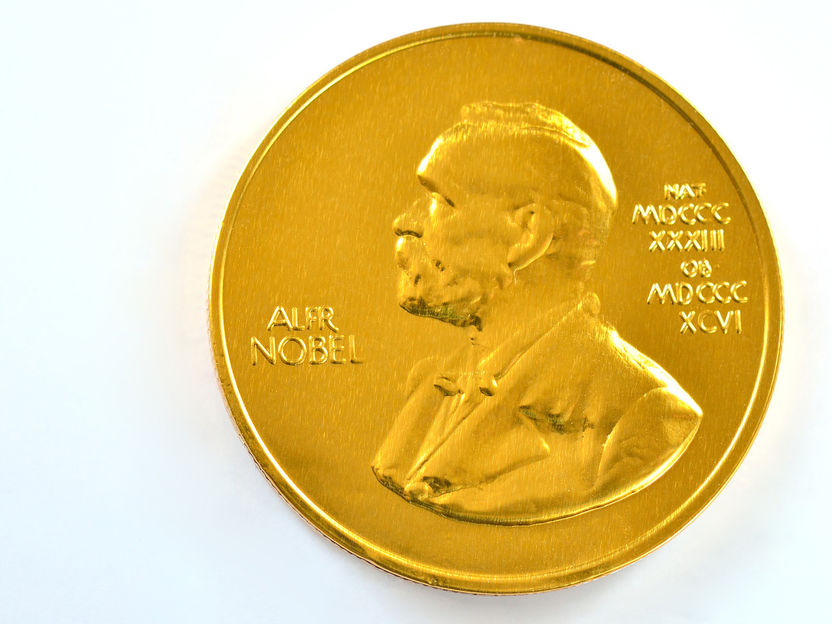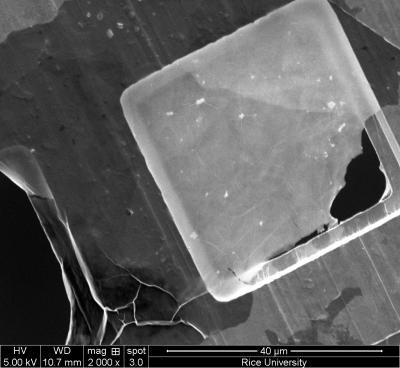Novel optical fibers transmit high-quality images
Image transport through new fiber architecture rivals that of current endoscopy imaging fibers
Advertisement
After having recently discovered a new way to propagate multiple beams of light through a single strand of optical fiber, engineers at the University of Wisconsin-Milwaukee (UWM) now have found that their novel fiber architecture can transmit images with a quality that is comparable or better than the current commercial endoscopy imaging fibers.
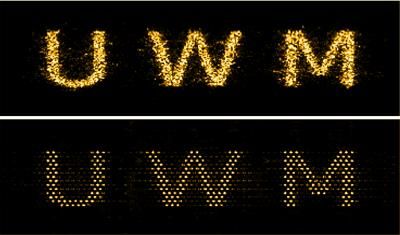
These images show the comparison between the simulated image transported through the researchers’ new optical fiber (top) and a commercially available endoscopy imaging fiber (bottom).
Salman Karbasi
Because of this, the work has potential not only in next-generation high-speed communication, but also biomedical imaging.
The work is published in the journal Nature Communications.
In conventional optical fibers, which are the backbone of the Internet, only one spatial channel of light traverses the fiber. In order to transmit more data, Arash Mafi and Salman Karbasi last year created an optical fiber using a method that is unique among existing multicore optical fibers.
Mafi, an associate professor of electrical engineering, and graduate research associate Karbasi harnessed a phenomenon called "Anderson localization" to design an optical fiber with a strong scattering mechanism that traps a beam of light as it traverses the fiber. The work was done in collaboration with Karl Koch, a scientist with Corning Inc.
The fiber consists of two randomly distributed polymers, which scatter the light. The fiber's disordered interior causes a beam of light passing through it to freeze laterally, accommodating multiple beams.
"I knew it would transport images," says Mafi. "What I didn't expect was that the resolution and contrast would be so good."
The team loads an image 30 microns wide – about one-third the width of a human hair – into the fiber. At the other end, a lens projects an enlarged image onto a screen. The optical fiber provides a direct one-to-one image transfer, Mafi says, with less pixelation and higher contrast.
"The beauty and distinction of this is that our design guides the light everywhere, not through individual cores," he says. "What really surprised us is that the transported image's high quality is achieved because of – not in spite of – the high level of disorder in the fiber."
Additional co-authors on the paper are Ryan Frazier, a UWM undergraduate student, and Thomas Hawkins and John Ballato of Clemson University.
The next step is to improve the building process in order to lower the loss of information.
Mafi and Karbasi theorize that one way to improve the quality of transported images is to use glass with randomly distributed air holes in the fiber architecture, rather than using polymers. There has been some preliminary progress in constructing glass fibers by the team, and further improvements are expected from the collaboration with Ballato's team at Clemson, experts in glass fiber fabrication.
Their fiber design is the first practical application of "Anderson localization," which is named after physicist Philip W. Anderson, who first identified the curious containment of electrons in a highly disordered medium, an observation for which he shared the 1977 Nobel Prize in Physics.




























